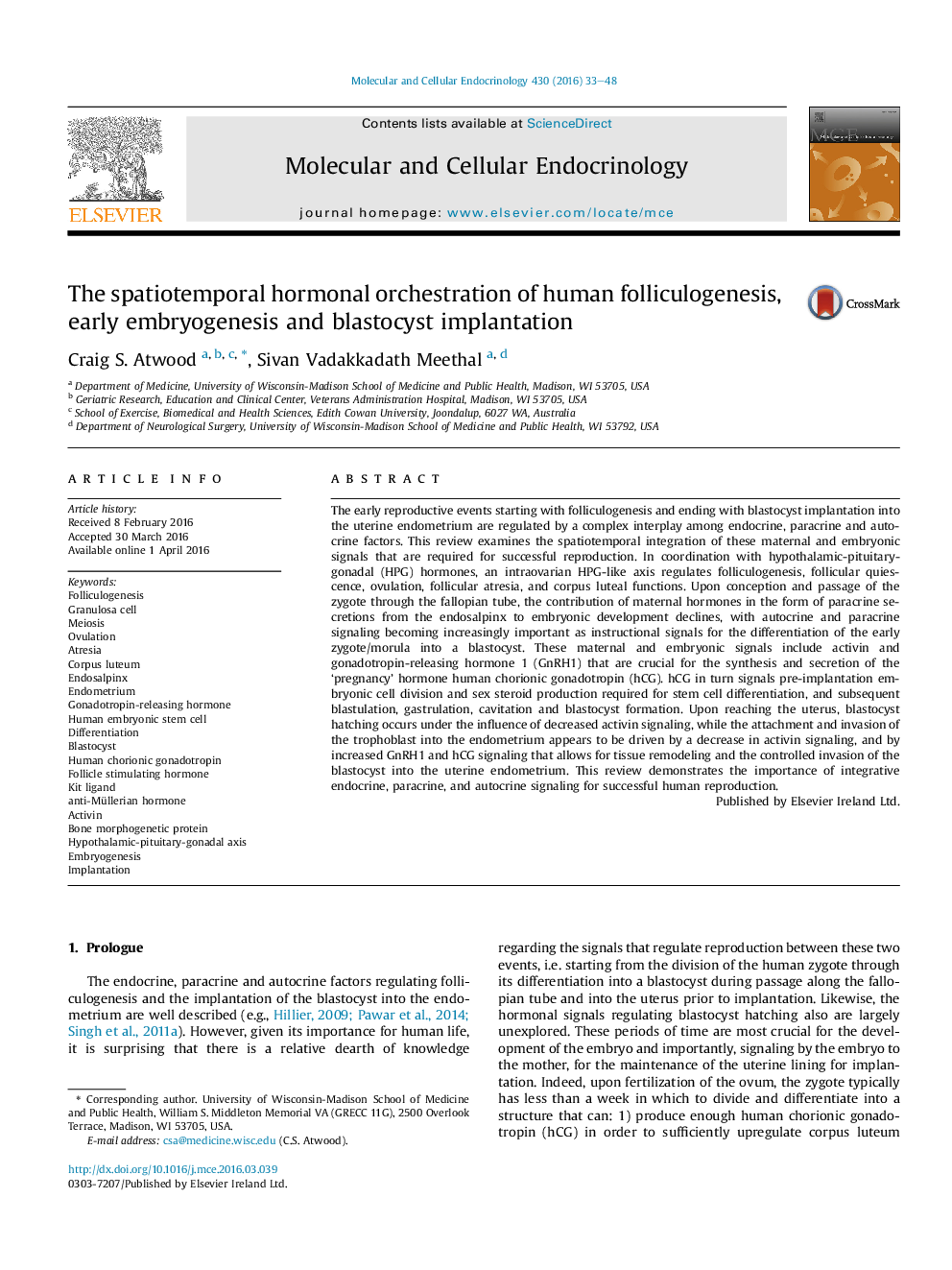| کد مقاله | کد نشریه | سال انتشار | مقاله انگلیسی | نسخه تمام متن |
|---|---|---|---|---|
| 2195536 | 1550849 | 2016 | 16 صفحه PDF | دانلود رایگان |
The early reproductive events starting with folliculogenesis and ending with blastocyst implantation into the uterine endometrium are regulated by a complex interplay among endocrine, paracrine and autocrine factors. This review examines the spatiotemporal integration of these maternal and embryonic signals that are required for successful reproduction. In coordination with hypothalamic-pituitary-gonadal (HPG) hormones, an intraovarian HPG-like axis regulates folliculogenesis, follicular quiescence, ovulation, follicular atresia, and corpus luteal functions. Upon conception and passage of the zygote through the fallopian tube, the contribution of maternal hormones in the form of paracrine secretions from the endosalpinx to embryonic development declines, with autocrine and paracrine signaling becoming increasingly important as instructional signals for the differentiation of the early zygote/morula into a blastocyst. These maternal and embryonic signals include activin and gonadotropin-releasing hormone 1 (GnRH1) that are crucial for the synthesis and secretion of the ‘pregnancy’ hormone human chorionic gonadotropin (hCG). hCG in turn signals pre-implantation embryonic cell division and sex steroid production required for stem cell differentiation, and subsequent blastulation, gastrulation, cavitation and blastocyst formation. Upon reaching the uterus, blastocyst hatching occurs under the influence of decreased activin signaling, while the attachment and invasion of the trophoblast into the endometrium appears to be driven by a decrease in activin signaling, and by increased GnRH1 and hCG signaling that allows for tissue remodeling and the controlled invasion of the blastocyst into the uterine endometrium. This review demonstrates the importance of integrative endocrine, paracrine, and autocrine signaling for successful human reproduction.
Journal: Molecular and Cellular Endocrinology - Volume 430, 15 July 2016, Pages 33–48
